This post may contain affiliate links. Please read our disclosure policy.
This old-fashioned yummy homemade caramel fudge is ultra-soft and creamy! It’s the perfect buttery sweet treat to enjoy any time of the day!
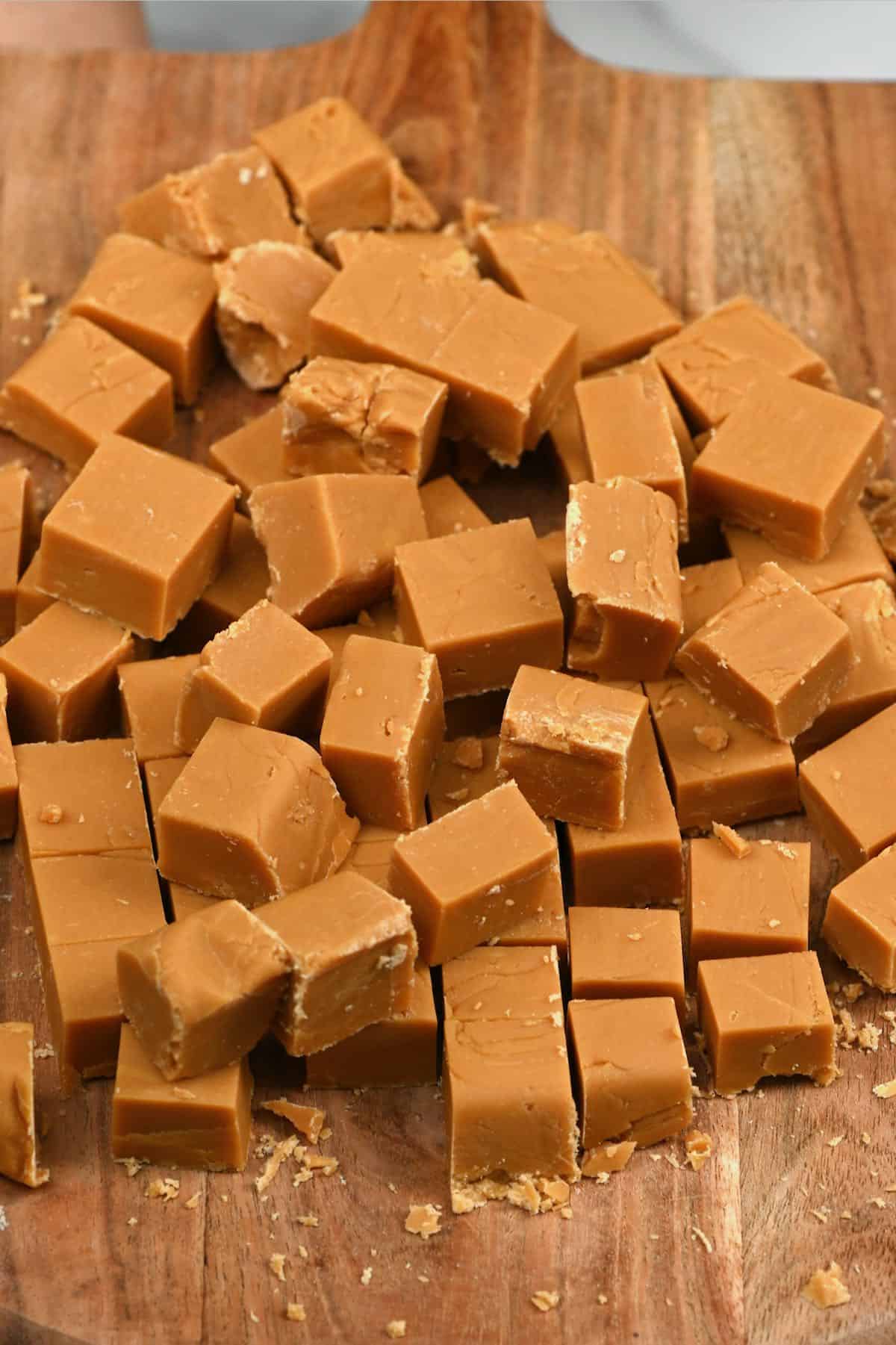
There is nothing quite like caramel fudge! This homemade caramel fudge has only 4 ingredients: sweetened condensed milk, milk, demerara sugar and butter. It’s really easy to make and it would also be a perfect edible gift!
Caramel fudge is not only incredibly simple to make, but it tastes amazing! It has a gorgeous smooth melt-in-the-mouth texture that will have you coming back for more.
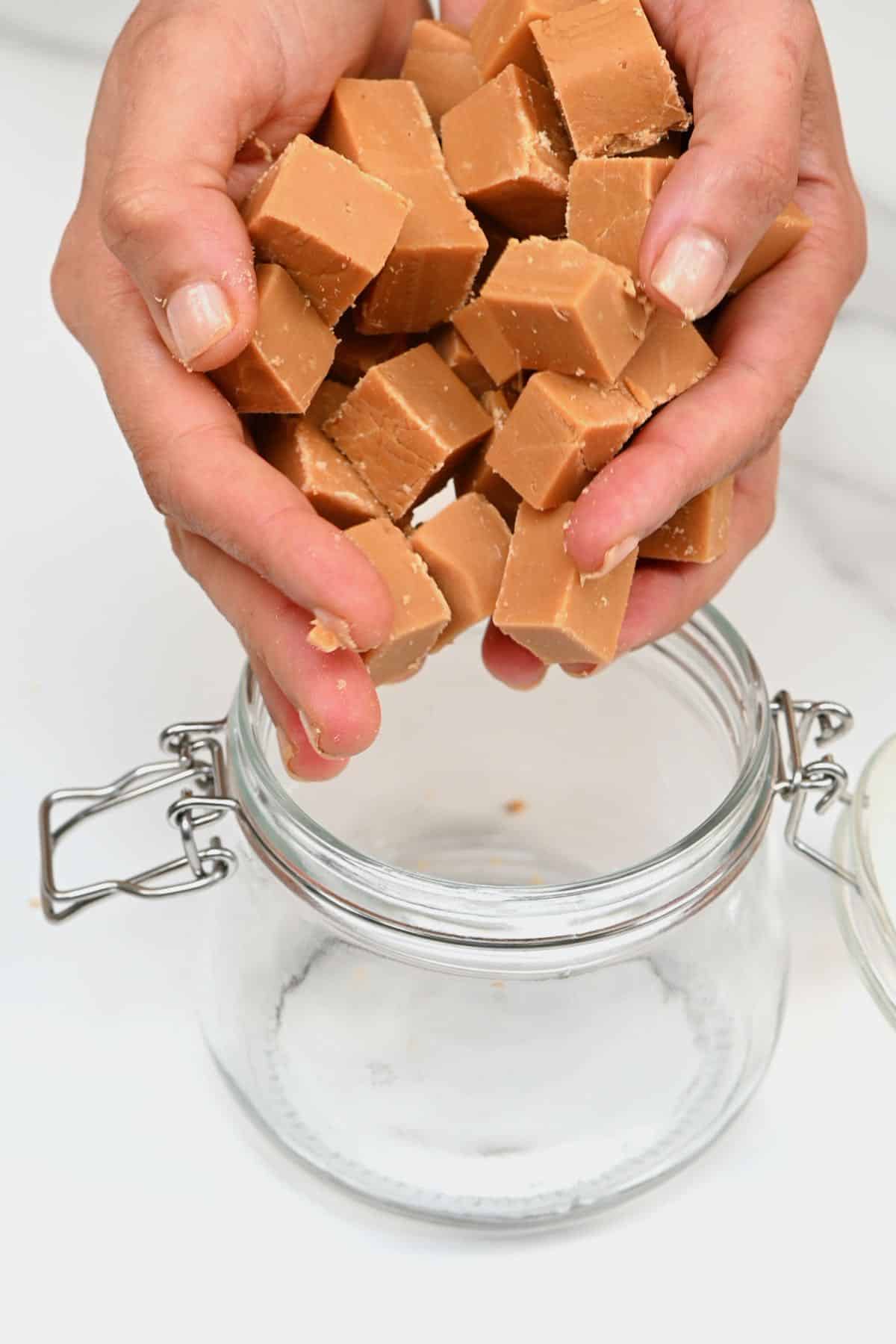
Most importantly, though, this old-fashioned homemade caramel fudge can be enjoyed with so many things! It’s phenomenal served alongside ginger tea, green tea, iced latte, and iced matcha green tea latte!
You probably already know that I enjoy making a variety of homemade treats and candy. I’ve already shared healthy chocolate fudge, as well as these healthy coconut candy bars, healthier homemade snickers bars, and healthy vegan Twix bars! I’ve even made my own chocolate at home, including healthy dark chocolate, milk chocolate, and even white chocolate! This luscious homemade caramel fudge is another easy treat I’m sure you’ll love, too!
Want to save this recipe?
The Caramel Fudge Ingredients
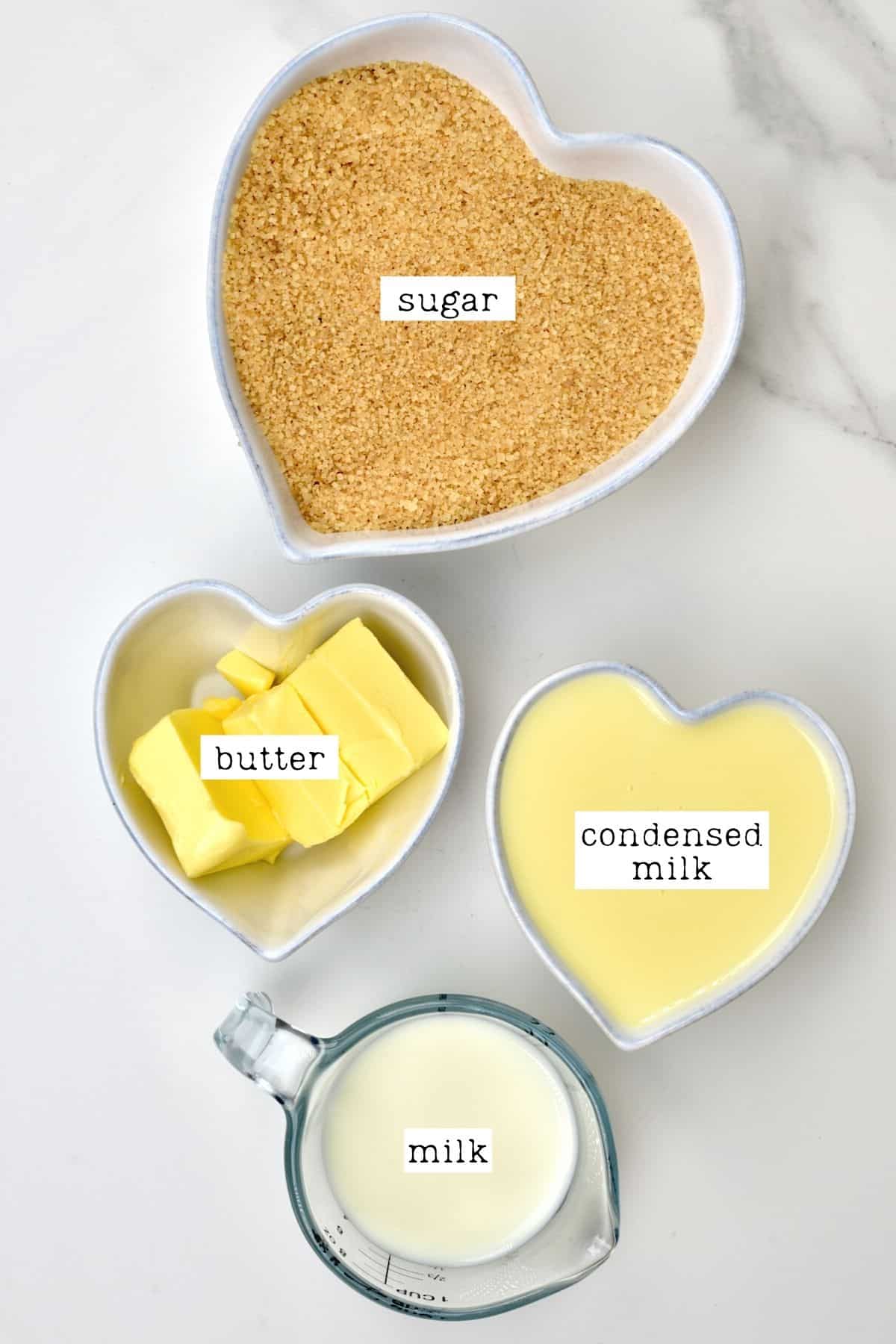
- Condensed milk: I used my own recipe for homemade condensed milk, but you could use store-bought.
- Milk: I used regular milk.
- Demerara sugar: I used demerara sugar, but if you want, you could substitute turbinado sugar or light brown sugar, instead. But I really think that demerara sugar gives a nice caramel color and flavor.
- Butter: I used regular butter, but you could also use salted butter for a salted caramel fudge.
Optional Add-ins
This caramel fudge is absolutely great on its own, but feel free to include some of your favorite add-ins for added texture and flavor. Here are a few ideas:
- If you’re a peanut butter lover, you can add a few tablespoons of homemade peanut butter!
- Nuts: You could add your favorite nuts or even roasted nuts or salted peanuts. Pecans and walnuts would be nice!
- Chocolate chips or pieces of homemade chocolate are also a great addition to this caramel fudge.
- Homemade vanilla extract: a tiny bit of vanilla would give a nice flavor boost.
- Flakes of sea salt: if you like sweet and salty together, flakes of sea salt on top of this fudge would be divine!
How To Make Homemade Caramel Fudge
First, place all the ingredients in a pot and heat up over low heat. Stir to help melt the ingredients and combine them. The mixture will start developing a smooth and creamy texture.
Then bring to a soft boil and simmer for 10 minutes. You need to stir continuously, though, otherwise, it may burn. You can also scrape the bottom of the pot to prevent the mixture from sticking to it.
If you are using a thermometer – the fudge should reach about 240-240ºF/115-120ºC. You can use a candy thermometer if you have one or, like me, you can use an infrared one.
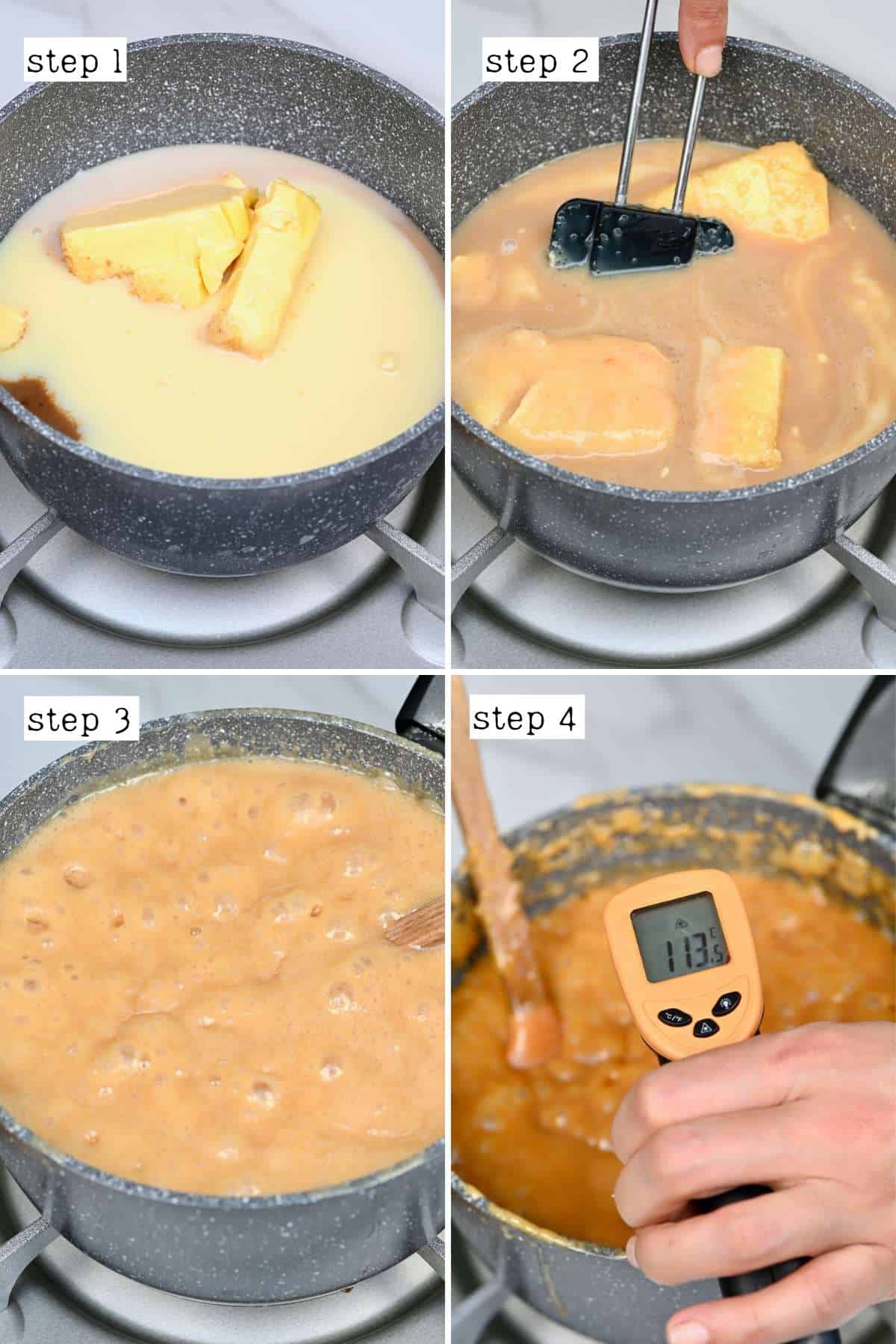
If you don’t have a thermometer, you can still test to see when the fudge is ready by using the iced water hack to make a small, soft ball of fudge.
To test it in the way, just spoon a small portion of the mixture (just about a teaspoon) over a bowl with iced water. You should be able to form a small, soft ball that doesn’t stick to your hands. This soft non-sticky ball will indicate the fudge is ready.
If the mixture is too sticky or doesn’t roll into a bowl, keep simmering the fudge for a few more minutes.
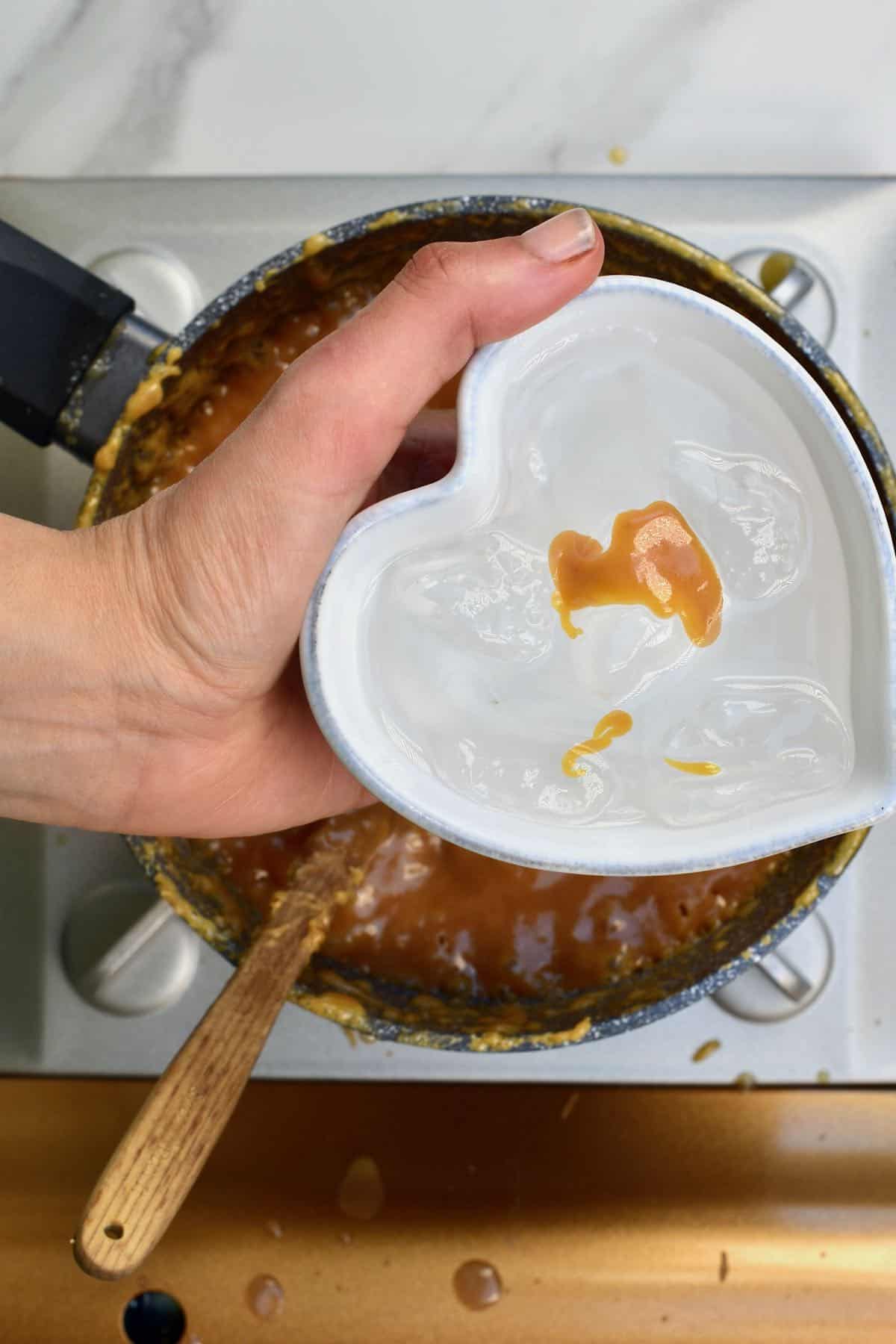
Once the fudge is ready, remove it from the heat and let it cool down for a few minutes.
Chef’s Tip: If you’re using any other flavors or add-ins, it’s best to add them now, before whisking.
Now it’s time to whisk the fudge until it’s thick. Whisking it will allow it to cool down and thicken. Keep in mind that this might take up to 10 minutes – it should almost begin to set and will also lose its shine. The longer you whisk it, the more crumbly the fudge will be at the end.
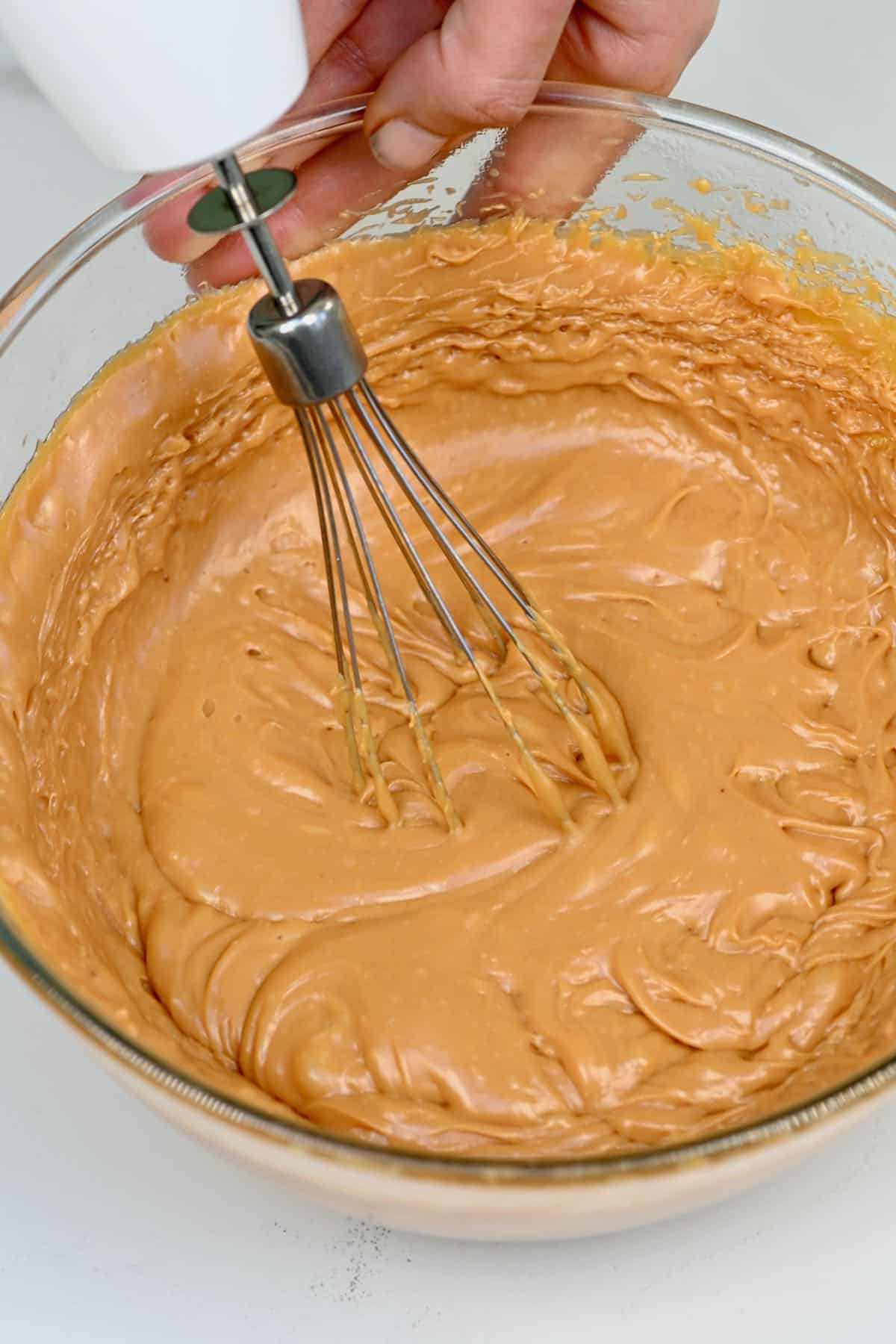
Pour the mixture into a tray lined with parchment paper. I used an 8 inch/20 cm tray. Spread the fudge evenly into the tray. You can even press with a spoon to smooth the top.
Finally, cover the fudge with more parchment paper. Let it cool down to room temperate before placing it in the fridge to chill and firm up.
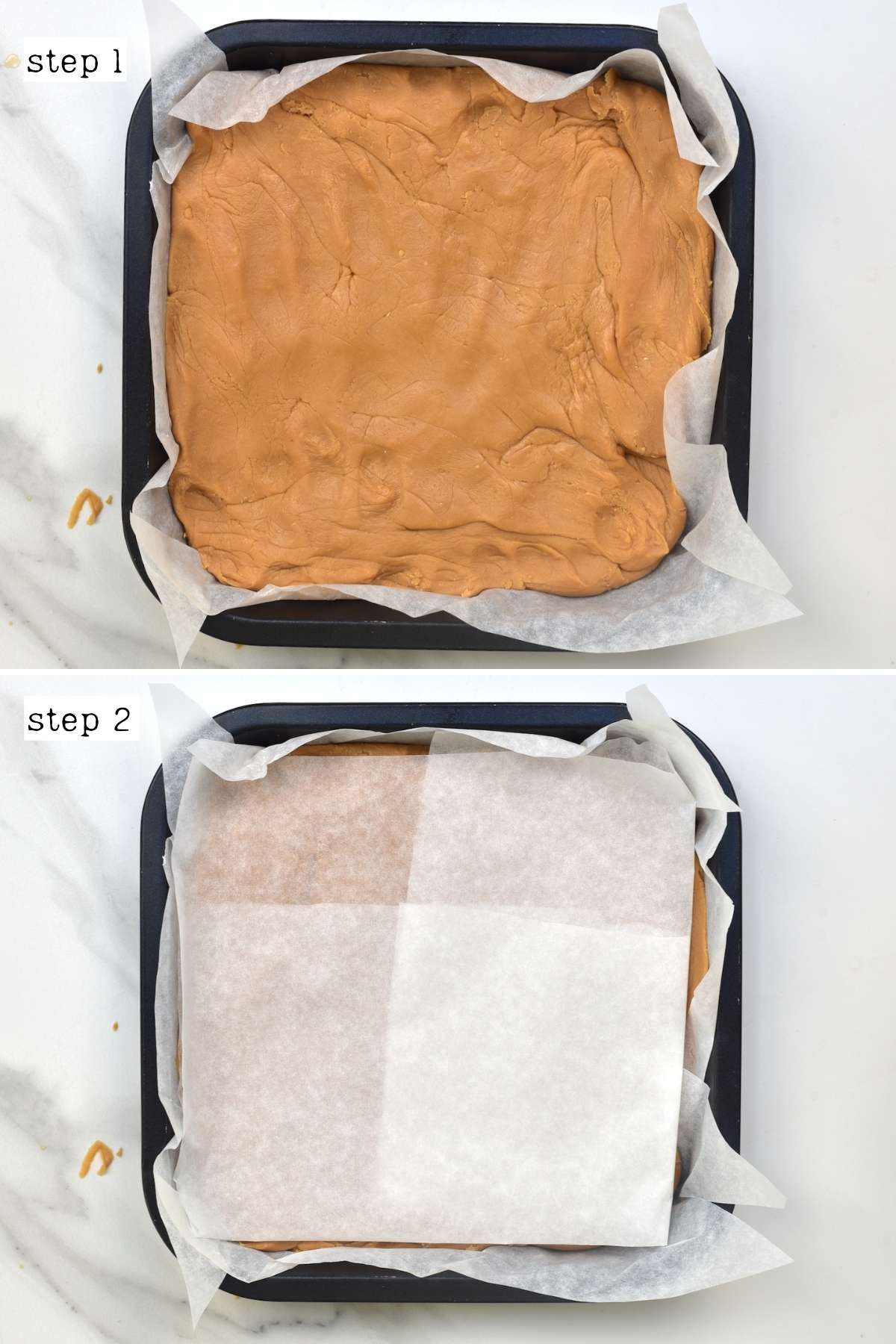
Once the fudge is set, you can cut it into squares. I like to cut mine into 1-1.5 inches, but they don’t have to be perfect.
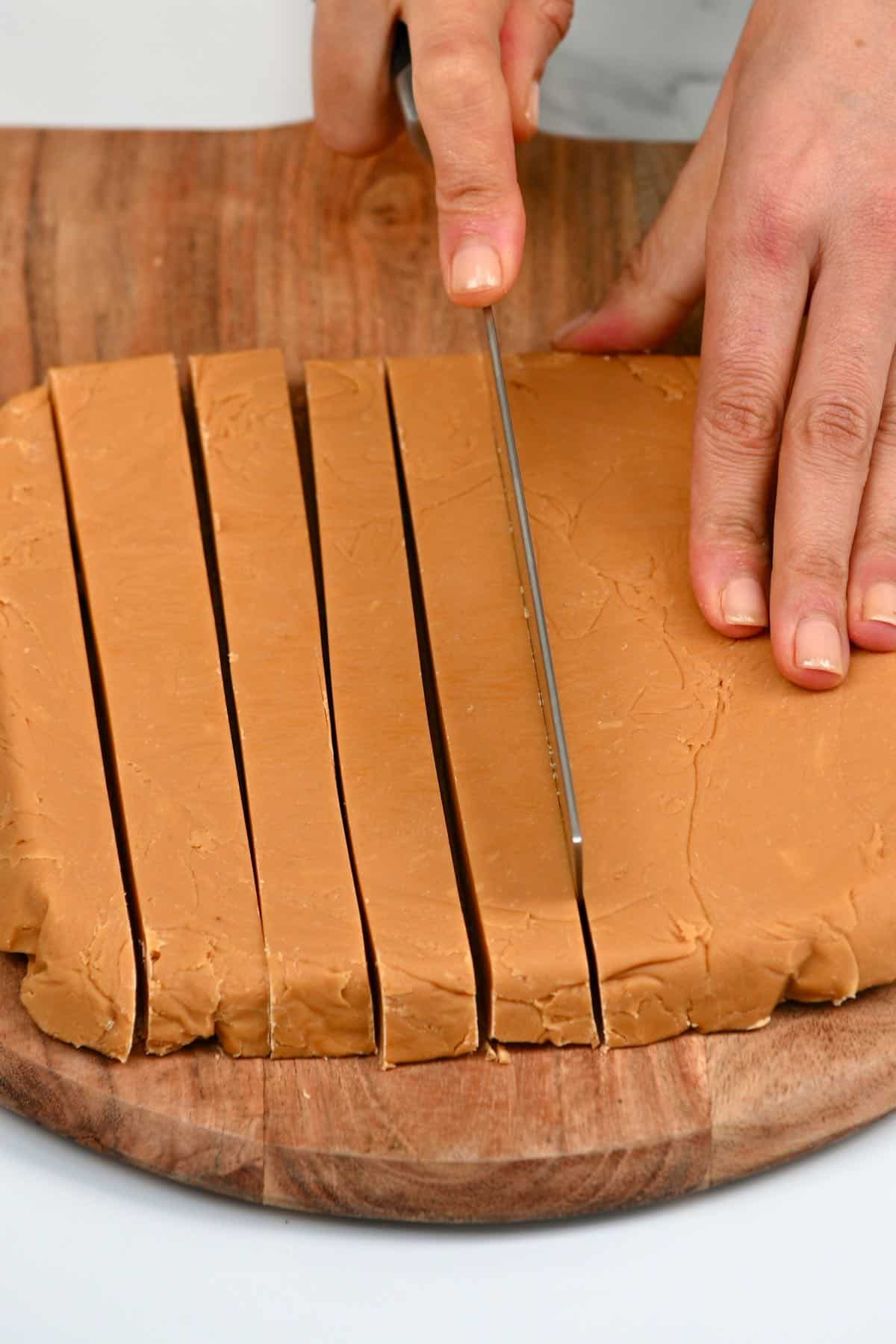
How to Store
Keep the fudge stored in an airtight jar or container.
You can keep it at room temperature for up to about 2 weeks. Just make sure it’s in an airtight container. You could also store it in the refrigerator for about 3 weeks.
Can you freeze fudge?
Yes. You can wrap each piece individually and then store them in an airtight container in the freezer for about 2 months. To thaw, just put it in the refrigerator.
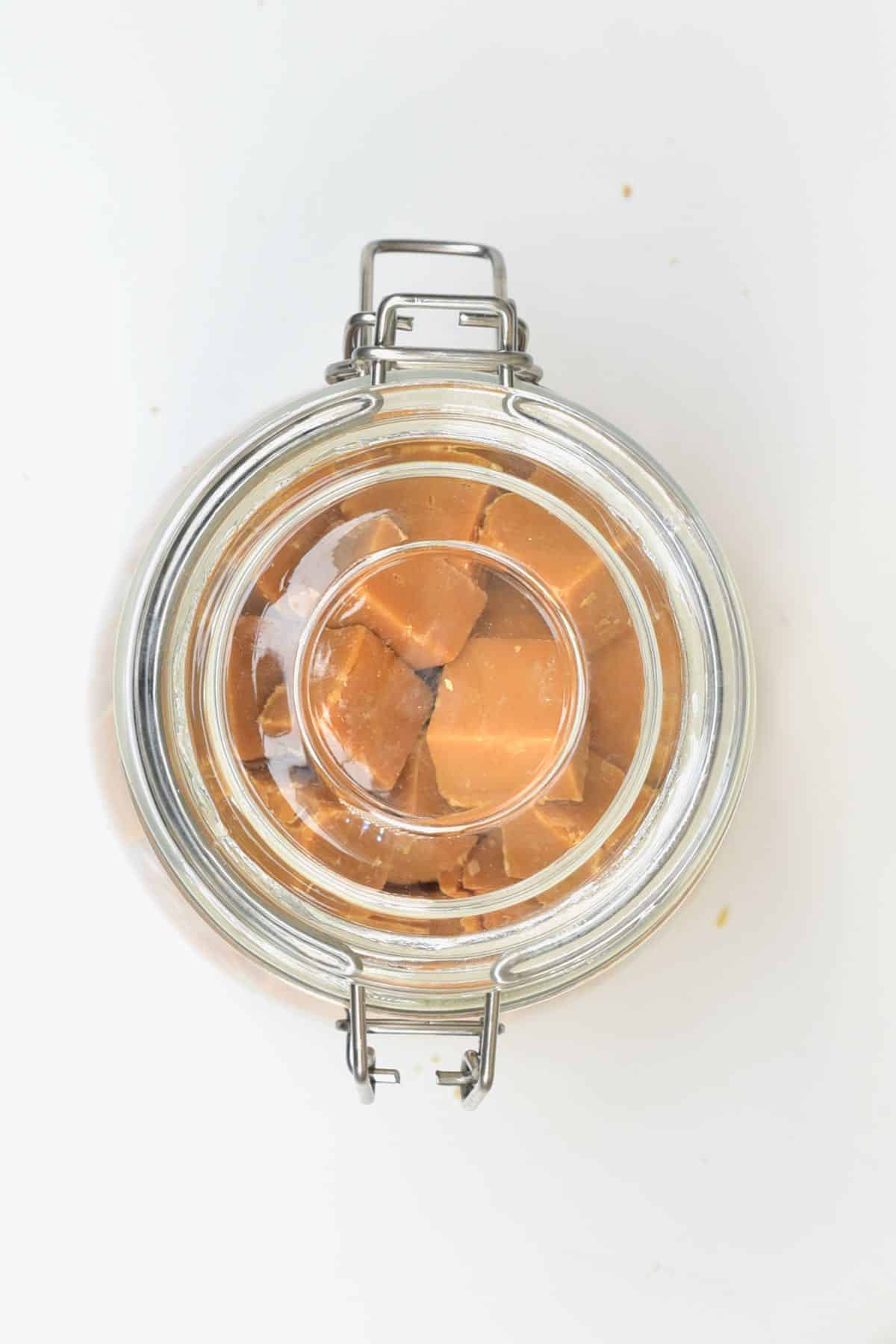
FAQs
No, they’re not the same! In order for this recipe to work, you need sweetened condensed milk. Using evaporated milk will not produce the same results.
If you don’t have a thermometer (candy or infrared), you can test to see if the fudge is ready using the iced water hack. After the fudge has boiled properly for about 10 minutes, you test it by dropping a small amount of the mixture into the glass/bowl of cold water. You’ll know that the fudge is perfect when this mixture sets and forms a ball that you can squeeze between your fingers without it sticking to them.
Yes, most of the time you can. Place it back in the pot, add a bit of water (up to 1/2 cup) to allow the fudge to dissolve, and then bring to a soft boil. Let it simmer for a few minutes, then check the temperate (or use the soft ball method) to check if the fudge is ready. Remove from the heat, let cool, and then proceed with the next steps.
If the fudge still doesn’t set, you can repurpose it and use it instead as syrup to top ice cream or icing for cakes and cookies. You can also just enjoy it with a spoon!
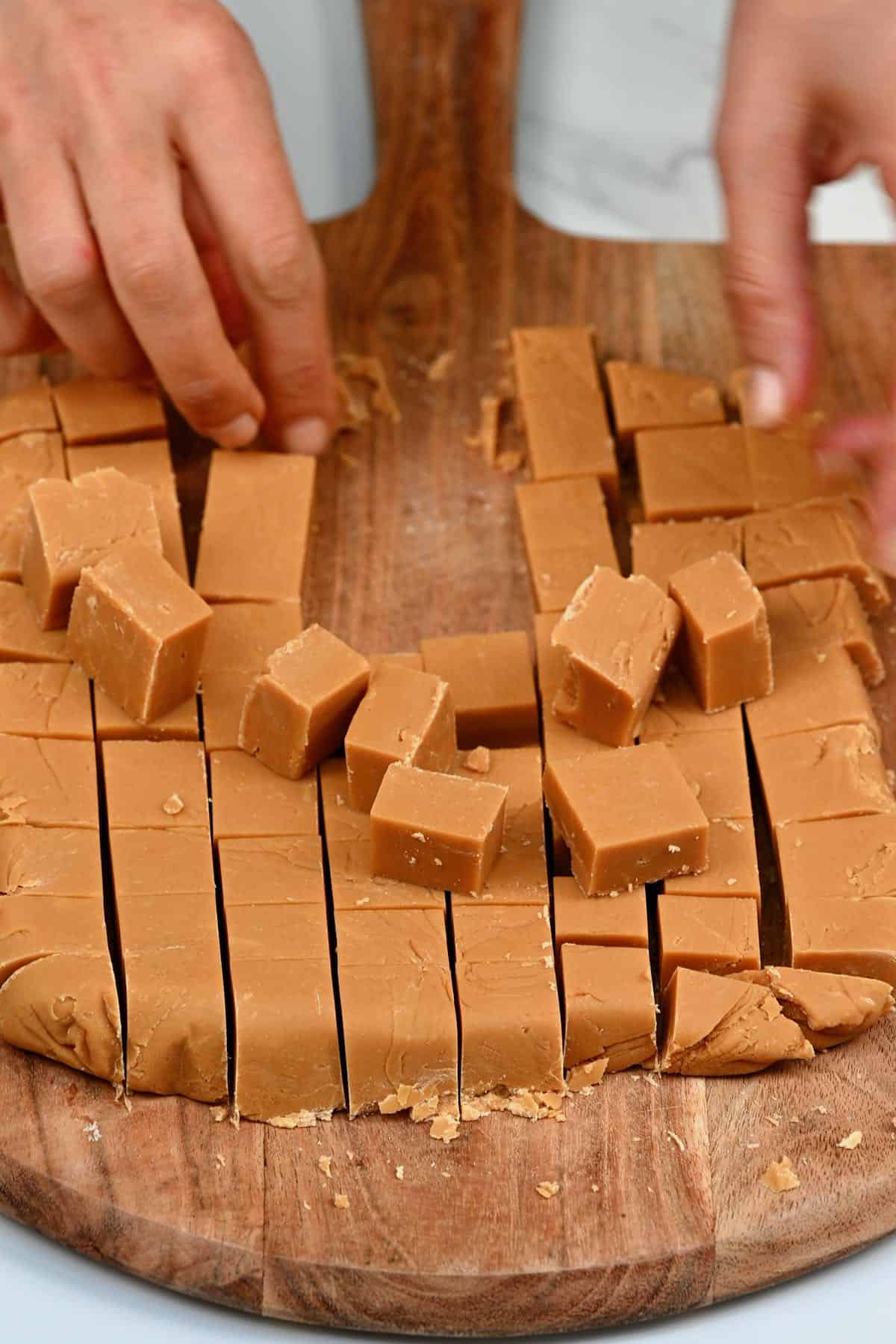
Recipe Notes and Variations
- I like using a non-stick saucepan because it makes cleaning up so much easier.
- Lining the pan with parchment paper makes it easier to remove the fudge because it doesn’t stick to the pan.
- I also prefer using a wooden spoon because it will stay cool while cooking since wood is a very poor conductor of heat.
- Instead of whisking the fudge, you can stir and beat it with a wooden spoon. I find that to take a lot longer though, so I prefer using a whisk.
Other Homemade Basics Recipes
- How to Make Simple Syrup (White, Cane, Brown, etc. Sugar Syrup)
- Easy Vegan Dandelion Honey (Dandelion Syrup)
- Zero Waste Ginger Syrup (+Ginger Pulp Crackers)
- How to Make Date Syrup (Natural Date Sweetener)
- Healthy Chocolate Fudge (Naturally Sweetened)
- The Ultimate Indulgent Fudgy Brownies
If you try this easy homemade caramel fudge recipe, I’d love to hear your thoughts/questions below. Also, I’d really appreciate a recipe card rating below, and feel free to tag me in your recipe recreations on Instagram @Alphafoodie!
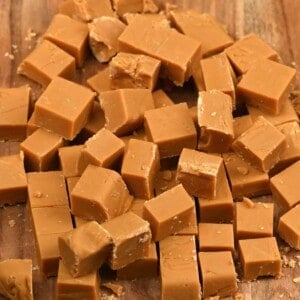
Easy Homemade Caramel Fudge
Equipment
Ingredients
- 13 oz condensed milk
- 5 oz milk
- 16 oz sugar demerara, turbinado, light brown, etc
- 4 oz butter unsalted or salted, to preference
Instructions
- Place all the ingredients in a pot and heat up over low heat. Stir to help melt the ingredients and combine them. The mixture will start developing a smooth and creamy texture.
- Bring to a soft boil and simmer for 10 minutes. Stir continuously so it doesn't burn. Scrape the bottom of the pot to prevent the mixture from sticking to it.
- If you are using a thermometer, the fudge should reach about 240-240ºF/115-120ºC. If you don't have a thermometer, spoon a small portion of the mixture over a bowl with ice water. You should be able to form a small ball that doesn't stick to your hands.
- Remove from the heat and let it cool down for a few minutes. and whisk until it's thick. Chef's Tip: If you're using any other flavors or add-ins, it's best to add them now, before whisking.
- Whisk the fudge until it's thick. Whisking it will allow it to cool down and thicken. Keep in mind that this might take up to 10 minutes – it should almost begin to set and will also lose its shine. The longer you whisk it, the more crumbly the fudge will be at the end.
- Pour the mixture into a tray lined with parchment paper (8 inches/20 cm) and spread evenly. Then cover it with more parchment paper and let it cold down to room temperature before placing it in the fridge to chill and firm up.
- Once the fudge is set, you can cut it into squares. I cut them into 1-1.5 inch cubes but you can cut them into your preferred size.
How to Store
- Keep the fudge stored in an airtight container.You can keep it at room temperature for up to about 2 weeks or in the refrigerator for about 3 weeks.You can also freeze the fudge cubes – wrap each piece individually and then store them in an airtight container in the freezer for about 2 months. To thaw, just put it in the refrigerator.
Notes
- If you’re a peanut butter lover, you can add a few tablespoons of homemade peanut butter!
- Nuts: You could add your favorite nuts or even roasted nuts or salted peanuts. Pecans and walnuts would be nice!
- Chocolate chips or pieces of homemade chocolate are also a great addition to this caramel fudge.
- Homemade vanilla extract: a tiny bit of vanilla would give a nice flavor boost.
- Flakes of sea salt: if you like sweet and salty together, flakes of sea salt on top of this fudge would be divine!
Nutrition
Nutrition information is automatically calculated, so should only be used as an approximation.

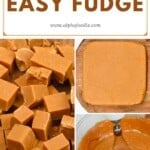
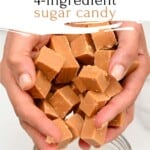
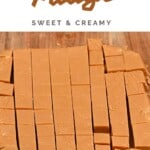
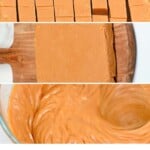
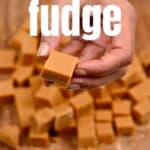

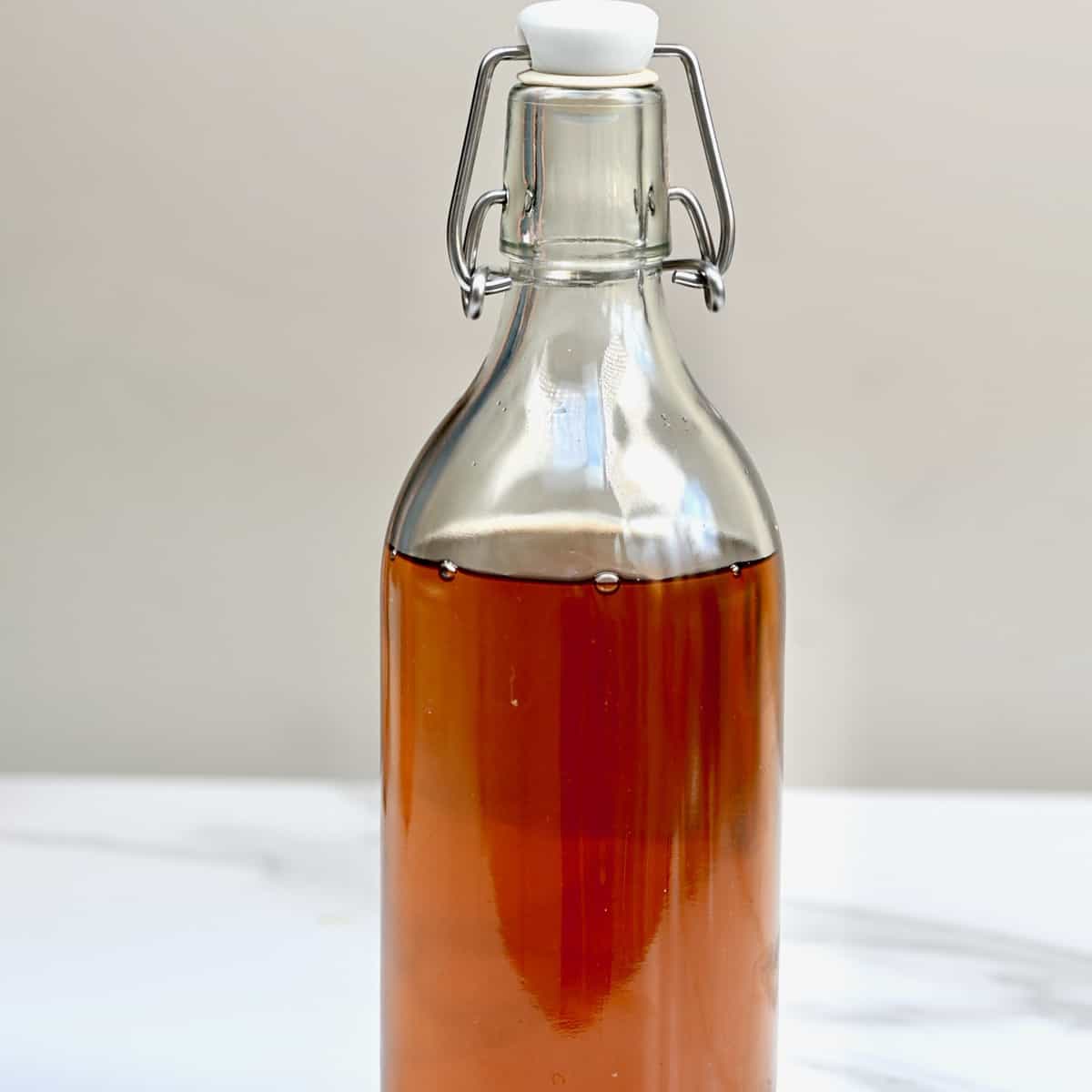
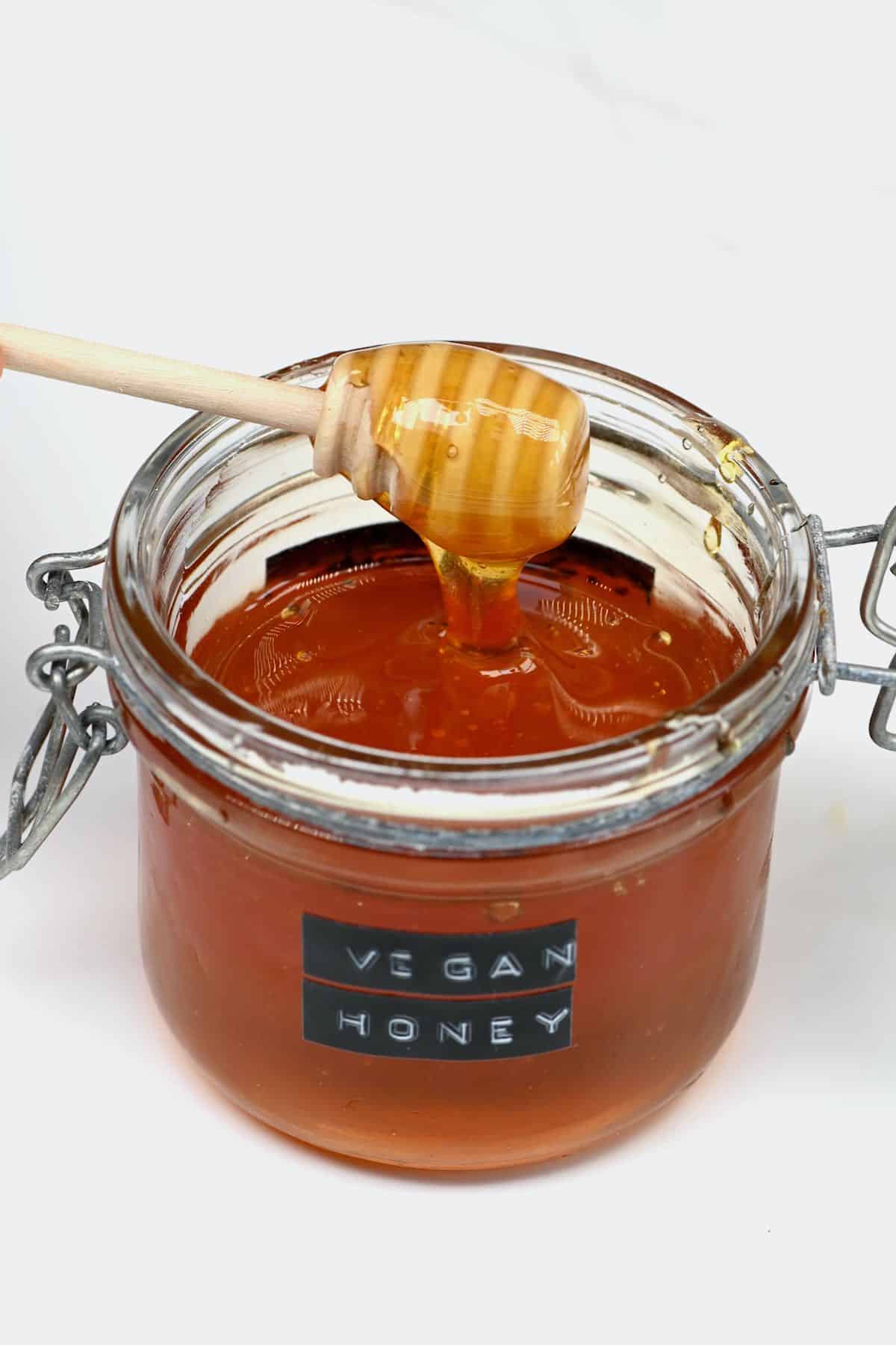
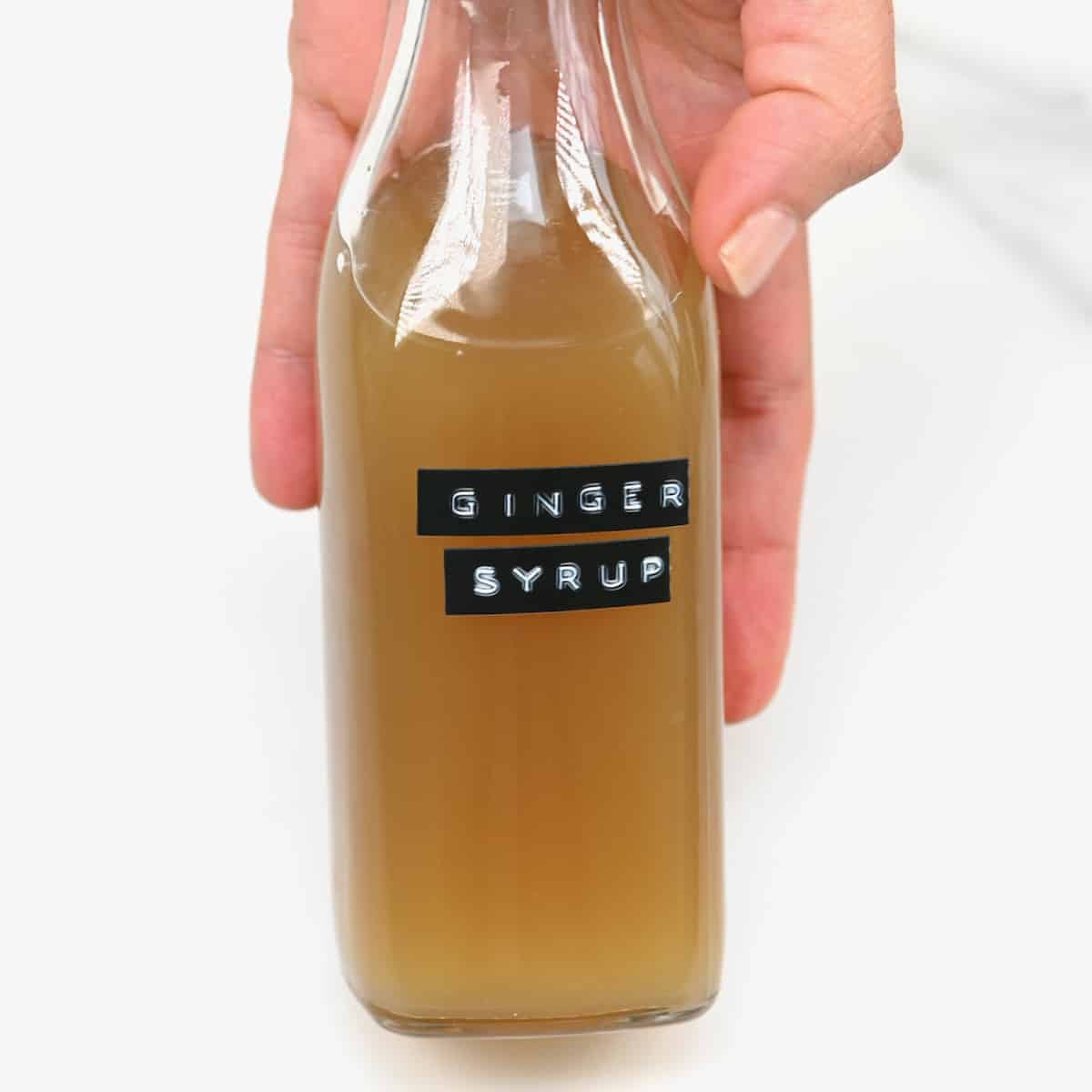









Can I use brown sugar
Hi Ethan,
Yes, you can use brown sugar.
Delicious – recipe easy to follow and very successful !
Glad you liked it, Gill!
can I use foil instead of parchment paper?
Hi Emmma,
Yes, you should be able to use foil. Let me know how it goes 🙂
Hi there! I’m really keen on trying this yummy recipe. I would like to know if I can use muscavado sugar as a substitute for the other brown sugars mentioned?
Hi Dee,
You can use muscovado sugar if wanted but keep in mind that it has a lot more molasses (when compared to turbinado and demerara) and it will have a stronger flavor.
Thanks for your response is granulated sugar okay to use?
Hi,
It should work just fine, let me know if you tried it.
For years I have tried to make fudge with varying degrees of success. Finally a recipe that works! Mine came out perfectly.
Thank you!
Thank you for your comment, Sue. So happy you are enjoying it. 🙂
Do you think I can brown the butter before adding the rest of the ingredients? Should I brown it and then let it cool? Or should I just add the ingredients to the hot butter?
Hi Mimi,
You should be able to brown the butter first and then add all the other ingredients, just make sure the butter doesn’t scorch on the bottom while browning it. I hope this helps, let me know how it turned out. 🙂
Curious to know what anyone would think about adding a little Caramel extract (instead of vanilla)? Or would this maybe be too over powering?
Hi Kristi,
It’s definitely worth a try! 🙂 Let me know if you did.
It looks so easy and yummy. Would love to try one day.
Thank you for your comment!
I have made this twice now. The first time I was short 1/2 cup of brown sugar, so I used 1/2 cup of granulated sugar and you could feel the gritty texture when it had completely cooled. The taste was still amazing! But the second time I did all 2 cups of light brown sugar and it came out wonderfully!
I will definitely be making this again! Thanks for sharing!!
Thank you so much for your comment. Veronice! So happy you are enjoying the recipe!